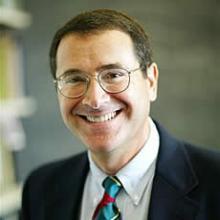The Ethical Cost of High-Price Art
MELBOURNE – In New York last month, Christie’s sold $745 million worth of postwar and contemporary art, the highest total that it has ever reached in a single auction. Among the higher-priced works sold were paintings by Barnett Newman, Francis Bacon, Mark Rothko, and Andy Warhol, each of which sold for more than $60 million. According to the New York Times, Asian collectors played a significant part in boosting prices.
No doubt some buyers regard their purchases as an investment, like stocks or real estate or gold bars. In that case, whether the price they paid was excessive or modest will depend on how much the market will be willing to pay for the work at some future date.
But if profit is not the motive, why would anyone want to pay tens of millions of dollars for works like these? They are not beautiful, nor do they display great artistic skill. They are not even unusual within the artists’ oeuvres. Do an image search for “Barnett Newman” and you will see many paintings with vertical color bars, usually divided by a thin line. Once Newman had an idea, it seems, he liked to work out all of the variations. Last month, someone bought one of those variations for $84 million. A small image of Marilyn Monroe by Andy Warhol – there are many of those, too – sold for $41 million.
Ten years ago, the Metropolitan Museum of Art in New York paid $45 million for a small Madonna and Child by Duccio. Subsequently, in The Life You Can Save, I wrote that there were better things that the donors who financed the purchase could have done with their money. I haven’t changed my mind about that, but the Met’s Madonna is beautifully executed and 700 years old. Duccio is a major figure who worked during a key transitional moment in the history of Western art, and few of his paintings have survived. None of that applies to Newman or Warhol.
Perhaps, though, the importance of postwar art lies in its ability to challenge our ideas. That view was firmly expressed by Jeff Koons, one of the artists whose work was on sale at Christie’s. In a 1987 interview with a group of art critics, Koons referred to the work that was sold last month, calling it “the ‘Jim Beam’ work.” Koons had exhibited this piece – an oversize, stainless steel toy train filled with bourbon – in an exhibition called “Luxury and Degradation,” that, according to the New York Times, examined “shallowness, excess and the dangers of luxury in the high-flying 1980s.”
In the interview, Koons said that the Jim Beam work “used the metaphors of luxury to define class structure.” The critic Helena Kontova then asked him how his “socio-political intention” related to the politics of then-President Ronald Reagan. Koons answered: “With Reaganism, social mobility is collapsing, and instead of a structure composed of low, middle, and high income levels, we’re down to low and high only... My work stands in opposition to this trend.”
Art as a critique of luxury and excess! Art as opposition to the widening gap between the rich and the poor! How noble and courageous that sounds. But the art market’s greatest strength is its ability to co-opt any radical demands that a work of art makes, and turn it into another consumer good for the super-rich. When Christie’s put Koons’s work up for auction, the toy train filled with bourbon sold for $33 million.
If artists, art critics, and art buyers really had any interest in reducing the widening gap between the rich and the poor, they would be spending their time in developing countries and with indigenous artists, where spending a few thousand dollars on the purchase of works could make a real difference to the wellbeing of whole villages.
Nothing I have said here counts against the importance of creating art. Drawing, painting, and sculpting, like singing or playing a musical instrument, are significant forms of self-expression, and our lives would be poorer without them. In all cultures, and in all kinds of situations, people produce art, even when they cannot satisfy their basic physical needs.
But we don’t need art buyers to pay millions of dollars to encourage people to do that. In fact, it would not be hard to argue that sky-high prices have a corrupting influence on artistic expression.
As for why buyers pay these outlandish sums, my guess is that they think that owning original works by well-known artists will enhance their own status. If so, that may provide a means to bring about change: a redefinition of status along more ethically grounded lines.
In a more ethical world, to spend tens of millions of dollars on works of art would be status-lowering, not status-enhancing. Such behavior would lead people to ask: “In a world in which more than six million children die each year because they lack safe drinking water or mosquito nets, or because they have not been immunized against measles, couldn’t you find something better to do with your money?”
Copyright: Project Syndicate, 2014.
www.project-syndicate.org
This article is brought to you by Project Syndicate that is a not for profit organization.
Project Syndicate brings original, engaging, and thought-provoking commentaries by esteemed leaders and thinkers from around the world to readers everywhere. By offering incisive perspectives on our changing world from those who are shaping its economics, politics, science, and culture, Project Syndicate has created an unrivalled venue for informed public debate. Please see: www.project-syndicate.org.
Should you want to support Project Syndicate you can do it by using the PayPal icon below. Your donation is paid to Project Syndicate in full after PayPal has deducted its transaction fee. Facts & Arts neither receives information about your donation nor a commission.

















